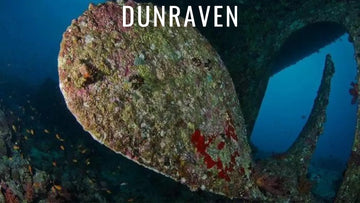The SS Dunraven was built at Mitchell's Dockyard in Newcastle in 1873. This 82-meter steamer, which also relied on sails for navigation, was used to transport spices, timber and cotton from Bombay to Newcastle.
In March 1876, she was sailing north in the Red Sea when she struck the southern end of the extensive Sha'ab Mahmud reef. Subsequent accounts of the accident are contradictory, and the most reliable story seems to be that the ship remained aground for several days until it caught fire and finally slid to the bottom of the reef, where it lies today.
Divign the SS Dunraven
This is not one of the most famous wrecks in the Red Sea and is sometimes dismissed as having little to offer. But with good planning and a leisurely dive, you will find that it has nothing to detract from other more famous wrecks in the area.
______________________
The best liveaboard offers in the Red Sea
______________________
The wreck, which lies between 18 and 30 meters deep, has a hull covered with soft corals and offers us the possibility to go inside through the stern and see how its colorful propeller and rudder still remain. In this area it is common to find batfish and huge groupers. Once inside, we will see a beautiful play of light thanks to a large crack in the hull. Be careful, because after more than a century of sinking, the danger of collapse is always present.

SS Dunraven plan
We can also enter the boiler room and the engine room, where we can see the gears or the transmission shaft, immersing ourselves in the naval history. In front of the ship we can enjoy beautiful schools of small glass fish and on the seabed, on the starboard side, we can see the masts resting on the seabed. This is an exceptional position for atmospheric photography. In the bow section, the anchor chains are adorned with soft corals and where batfish, scorpion fish or crocodile fish dwell.





















